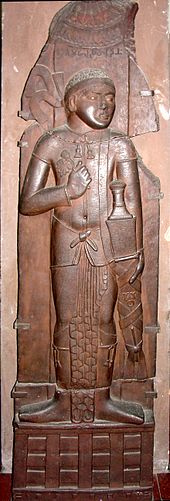Wars of the Shungas
War and conflict characterised the Shunga period. They are known to have warred with the Kalingas, Satavahanas, the Indo-Greeks, and possibly the Panchalas and Mathuras.
The Shunga Empire’s wars with the Indo-Greek Kingdom figure greatly in the history of this period. From around 180 BCE the Greco-Bactrian ruler Demetrius conquered the Kabul Valley and is theorised to have advanced into the trans-Indus to confront the Shungas.The Indo-Greek Menander I is credited with either joining or leading a campaign to Pataliputra with other Indian rulers; however, very little is known about the exact nature and success of the campaign. The net result of these wars remains uncertain.
Literary evidence
Several works, such as the Mahabharata and the Yuga Purana describe the conflict between the Shungas and the Indo-Greeks.
Military expeditions of the Shungas
Scriptures such as the Ashokavadana claim that Pushyamitra toppled Emperor Brihadratha and killed many Buddhist monks. Then it describes how Pushyamitra sent an army to Pataliputra and as far as Sakala (Sialkot), in the Punjab, to persecute Buddhist monks.
War with the Yavanas (Greeks)
The Indo-Greeks, called Yavanas in Indian sources, either led by Demetrius I or Menander I, then invaded India, possibly receiving the help of Buddhists. Menander in particular is described as a convert to Buddhism in the Milindapanha.
The Hindu text of the Yuga Purana, which describes Indian historical events in the form of a prophecy, relates the attack of the Indo-Greeks on the Shunga capital Pataliputra, a magnificent fortified city with 570 towers and 64 gates according to Megasthenes, and describes the impending war for city:
However, the Yuga Purana indicates that the Yavanas (Indo-Greeks) did not remain for long in Pataliputra, as they were faced with a civil war in Bactria.
Western sources also suggest that this new offensive of the Greeks into India led them as far as the capital Pataliputra:
Battle on the Sindhu river
An account of a direct battle between the Greeks and the Shunga is also found in the Mālavikāgnimitram, a play by Kālidāsa which describes a battle between a squadron of Greek cavalrymen and Vasumitra, the grandson of Pushyamitra, accompanied by a hundred soldiers on the “Sindhu river”, in which the Indians defeated a squadron of Greeks and Pushyamitra successfully completed the Ashvamedha Yagna. This river may be the Indus river in the northwest, but such expansion by the Shungas is unlikely, and it is more probable that the river mentioned in the text is the Sindh River or the Kali Sindh River in the Ganges Basin.
Epigraphic and archaeological evidence
Dhanadeva-Ayodhya inscription
Ultimately, Shunga rule seems to have extended to the area of Ayodhya. Shunga inscriptions are known as far as Ayodhya in northern central India, in particular, the Dhanadeva-Ayodhya inscription refers to a local king Dhanadeva, who claimed to be the sixth descendant of Pushyamitra. The inscription also records that Pushyamitra performed two Ashvamedhas (victory sacrifices) in Ayodhya.
Yavanarajya inscription
The Greeks seem to have maintained control of Mathura. The Yavanarajya inscription, also called the “Maghera inscription”, discovered in Mathura, suggests that the Indo-Greeks were in control of Mathura during the 1st century BCE. The inscription is important in that it mentions the date of its dedication as “The last day of year 116 of Yavana hegemony (Yavanarajya)”. It is considered that this inscription is attesting the control of the Indo-Greeks in the 2nd and 1st centuries BCE in Mathura, a fact that is also confirmed by numismatic and literary evidence. Moreover, it does not seem that the Shungas ever ruled in Mathura or Surasena since no Shunga coins or inscriptions have been found there.
The Anushasana Parva of the Mahabharata affirms that the city of Mathura was under the joint control of the Yavanas and the Kambojas.
Later however, it seems the city of Mathura was retaken from them, if not by the Shungas themselves, then probably by other indigenous rulers such as the Datta dynasty or the Mitra dynasty, or more probably by the Indo-Scythian Northern Satraps under Rajuvula. In the region of Mathura, the Arjunayanas and Yaudheyas mention military victories on their coins (“Victory of the Arjunayanas”, “Victory of the Yaudheyas”), and during the 1st century BCE, the Trigartas, Audumbaras and finally the Kunindas also started to mint their own coins, thus affirming independence from the Indo-Greeks, although the style of their coins was often derived from that of the Indo-Greeks.
Heliodorus pillar
Very little can be said with great certainty. However, what does appear clear is that the two realms appeared to have established normalised diplomatic relations in the succeeding reigns of their respective rulers. The Indo-Greeks and the Shungas seem to have reconciled and exchanged diplomatic missions around 110 BCE, as indicated by the Heliodorus pillar, which records the dispatch of a Greek ambassador named Heliodorus, from the court of the Indo-Greek king Antialcidas, to the court of the Shunga emperor Bhagabhadra at the site of Vidisha in central India.
Thank you for your time and consideration 🙏…
@Puja Singh…




